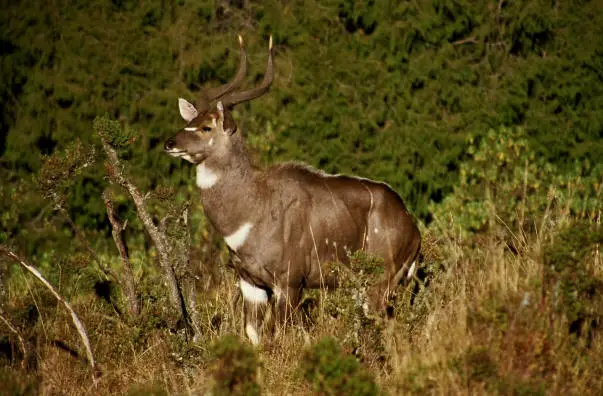Elephant
Once you see photos of the African and the Asian elephants together, it is easy to see the differences. The African elephant is larger, with ears that measure six and a half feet.
The Asian elephant, along with much smaller ears, has a concave forehead and a sloping hump on the back.
From the tip of the trunk to the tail, an African elephant could measure thirty feet and an Asian elephant as much as twenty-six feet.

Elephants
An African bull has tusks which are large, long and curved. The female has smaller, straighter tusks.
The male Asian elephant has tusks but the females do not.
Elephants are plant eaters whose diet is mainly grass.
They like bark and browsing on trees and shrubs. They love to find banana trees. They can eat 400 lbs. of food a day.
They drink water at least once a day and then love to cool themselves by wallowing in the water.
They swim and can go long distances, in fact miles in the water. They also go snorkeling, using their trunk.
They do not have sweat glands which would help keep them cool so they must find shade or water to cool themselves in. Their ears make good flapping fans and also, a dust bath seems to help cool them if no water is available.

African Elephants
Gestation is nearly 24 months. Elephants are wonderful mothers and the females of the herd live together under a dominant grandmother.
The matriarch is the protector and the one who makes sure there is enough food and water in the area. When they move on, she chooses when and where.
Female elephants help each other with the care of the young and the baby elephants play together. The mothers are fierce protectors of their young.
Male elephants live in groups when they are no longer in the care of their mothers and still too young to fight the old bulls for a mate.
Elephants communicate by infrasonic calls which are low frequency sounds which can be picked up by other elephants at a distance of five miles.
They also communicate by body language and by touch. An elephant greeting involves a lot of touching, trunk entwining, sniffing of each others faces and they use their voices.Find out more about the Elephant over at Wikipedia »



omg i love elephants my favoirite by seing this i have to do my home work so bb
Elephants are so cool with trunks and stuff! YEA! they are soooo awsome. Oh My Gosh elephants are just so cool I can’t believe it! Bye!